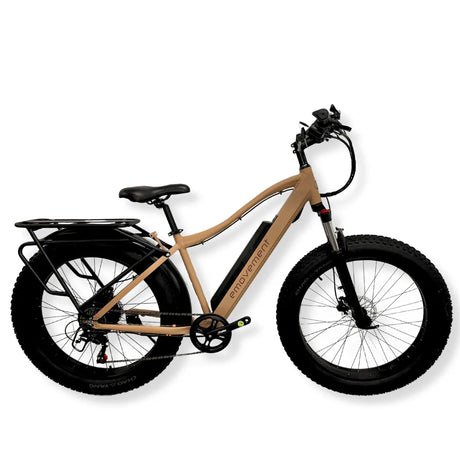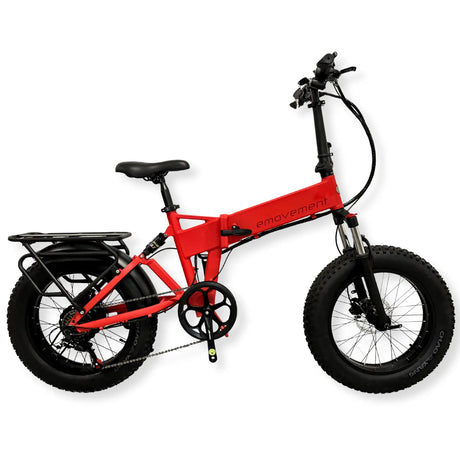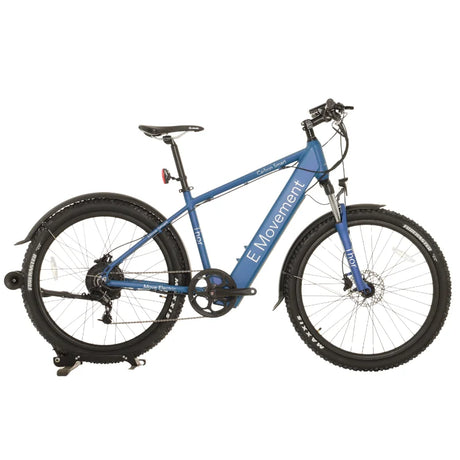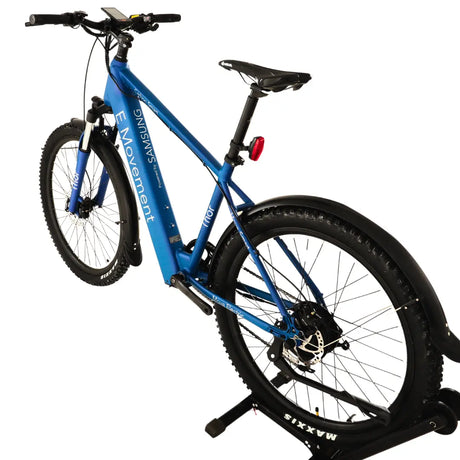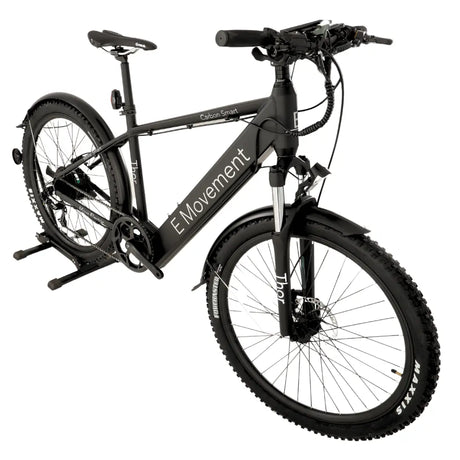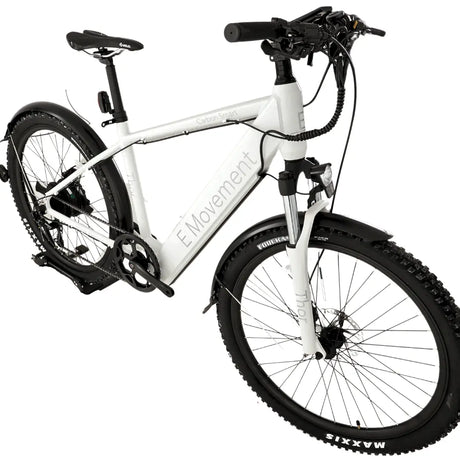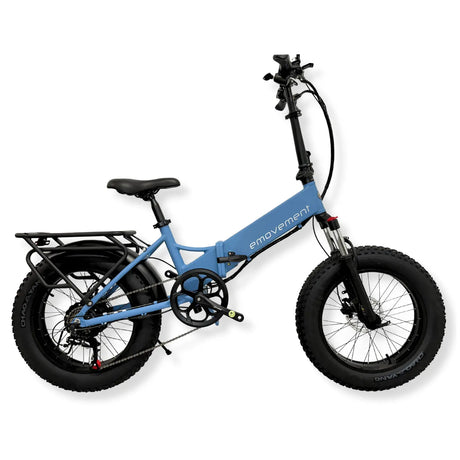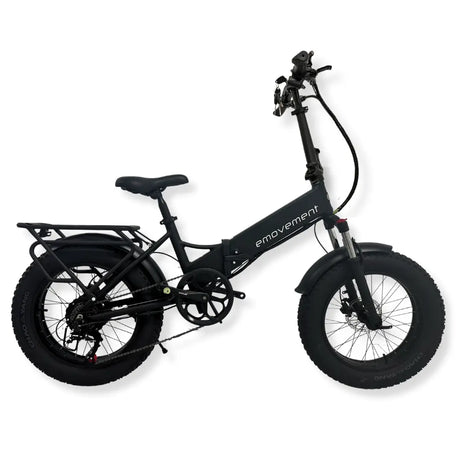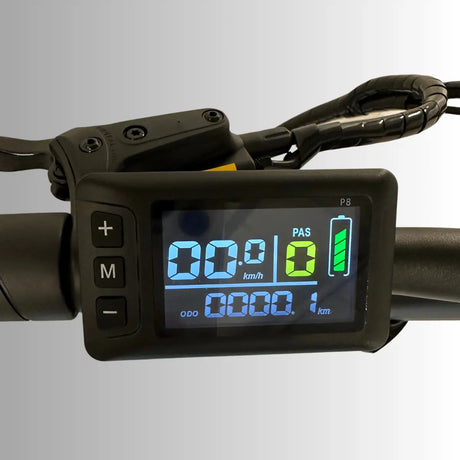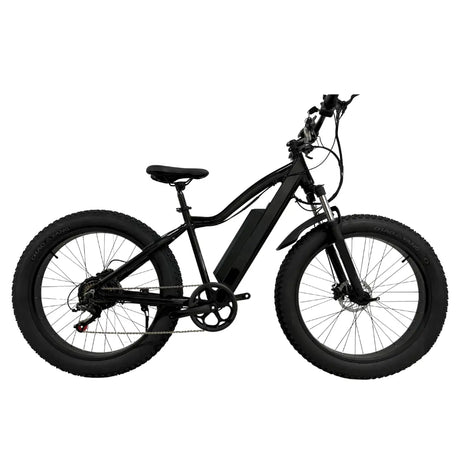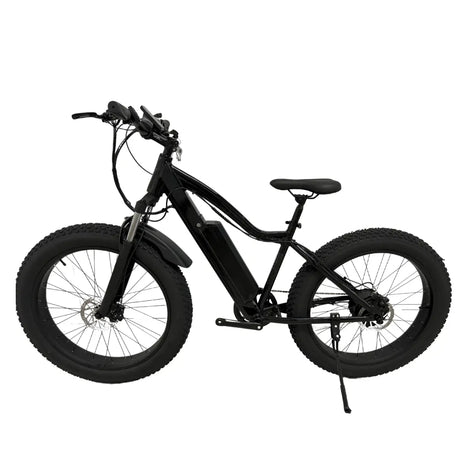Inside this Article:
- 1. Physical Security Measures
- 1.1. High-Quality Locks: D-locks vs. Chain Locks vs. Folding Locks
- 1.2 Securing Removable Components: Battery and Display
- 1.3 Ideal Places to Lock Your E-Bike
- 2. Technological Solutions
- 2.1 GPS Trackers: How They Work and Where to Place Them
- 2.2 Alarm Systems for Electric Bikes
- 2.3 Smart Locks: Integrating Technology and Physical Security
- 3. Safe Storage Solutions
- 3.1 Home Storage: Wall Mounts and Floor Stands
- 3.2 Secure Outdoor Sheds Specifically for E-Bikes
- 3.3 Considerations for Apartment Dwellers: Communal Areas and Storage Units
- 4. Tips for Parking and Safeguarding Your E-Bike Safely
- 4.1 Parking Your Electric Bike in the Right Place
- 4.2 Note Your Bike’s Serial Number
- 4.3 Locking Techniques
- 5. Registering Your Electric Bike in the UK
- 6. Insurance for Electric Bikes
- 6.1 Evaluating if You Need Electric Bike Insurance
- 6.2 What to Look for in an Electric Bike Insurance Policy?
- 7. Creating a Bike Passport
- 7.1 What is a Bike Passport?
- 7.2 Key Components of a Bike Passport
- 7.3 Maintaining and Updating Your Passport
- 8. Community Safety Initiatives
- 8.1 Joining Local E-bike Communities for Safety Tips
- 8.2 Collaborative E-bike Parking Spaces or Shared Garages
- 9. Educating Others
- 9.1 Building Awareness in Your Community about E-bike Theft
- 9.2 Organising or Attending Safety Workshops
- 10. Recap: Pro Tips for Ultimate E-Bike Safety
- 11. Summary
- 12. Frequently Asked Questions (FAQs)
The swift rise of electric bikes isn’t merely a passing trend, but an indication of society’s shift towards environmentally-friendly and efficient commuting options. These bikes provide a unique blend of manual cycling and electric assistance, bridging the gap between traditional bicycles and motorised vehicles.
As more and more individuals adopt e-bikes for daily use, the focus on safety and security has become essential. Safety measures go beyond theft prevention, encompassing responsible riding, the proper understanding of electric bicycle mechanics, and appropriate storage solutions. Keep reading as we consider how you can ensure both the safety of your e-bike and the enhancement of your overall riding experience.
1. Physical Security Measures
Electric bikes are more than just a mode of transportation; they represent an investment in sustainable mobility while often carrying significant personal and financial value. As e-bike usage surges, so does the interest of opportunistic thieves. Protecting your vehicle requires both vigilant behaviour and the right security tools. In this section, we’ll guide you through practical steps and strategies to help keep your bike safe.
1.1. High-Quality Locks: D-locks vs. Chain Locks vs. Folding Locks
Selecting the right e-bike lock is an essential step in e-bike security. Your choice can make the difference between a secure electric bike and an easy target for thieves:
- D-locks (or U-locks): D-locks are among the most popular and preferred lock options for keeping your bicycle safe. Their robust design and tough steel composition make them a formidable barrier against theft. However, the rigid shape can sometimes limit locking options.
- Chain Locks: These provide flexibility in terms of where and how you secure your e-bike. Made of hardened steel, chain locks are tough to break but can be heavier to carry around.
- Folding Locks: This type of lock was introduced recently into the world of electric bicycle locks, offering a mix between the sturdiness of D-locks and the flexibility of chain locks. They are compact, easy to transport, and provide varied locking configurations, which makes them suitable for diverse parking situations.
1.2 Securing Removable Components: Battery and Display
An e-bicycle includes components that aren’t typically found on standard bikes. The battery and display are prime examples, and they often attract the attention of thieves:
- Battery: Always check whether the battery is locked onto the frame. Some bikes come with built-in locking mechanisms for this purpose. If you’re parking for extended periods, consider removing the battery and taking it with you.
- Display/Controller: Depending on your electric bike model , the display may be removable. If so, treat it like you would your battery—detach it and keep it safe when you’re away from your bike.
1.3 Ideal Places to Lock Your E-Bike
Choosing the right location for locking up your e-bike can significantly enhance its security. With a combination of strategic placement and community resources, you can minimise theft risks:
- Well-lit Areas : Thieves often prefer dark corners. Parking in a brightly lit location reduces the chances of your bike getting stolen. Additionally, an illuminated spot allows bystanders to easily notice any suspicious activities around your electric bike.
- High-Foot Traffic Locations: Areas with a constant stream of people act as natural deterrents. The more witnesses around, the less likely a thief will try to steal anything. Popular spots like busy cafes or main building entrances can be ideal places to lock your bicycle.
- Sturdy Fixtures: It’s essential to lock your e-bike to a secure, immovable object. Established bike racks or heavy lamp posts are good choices. Ensure that the object is not only strong but also tall enough to prevent anyone from lifting the bike over it.
- Community Initiatives: With the rise of electric bikes, many localities offer communal storage or dedicated parking zones. These areas, often monitored or overseen by fellow cyclists, provide an added layer of security. Communal storage spaces combine the benefits of a safe space with community vigilance.
2. Technological Solutions
One way to obtain enhanced protection against theft involves the integration of technology into security strategies. Let’s take a look at some technological innovations designed for safeguarding electric bikes.
2.1 GPS Trackers: How They Work and Where to Place Them
GPS trackers are invaluable assets in e-bike security, using real-time location data to help locate and recover stolen bikes:
- How They Work: Taking advantage of satellite networks, these trackers continually update the electric bike’s location, allowing owners to track its whereabouts through smartphone apps or online platforms.
- Where to Place Them: A tracker’s effectiveness often relies on its discreet placement. Hidden spots like beneath the saddle, inside the seat post, or within the vehicle’s frame make it challenging for thieves to detect or remove this device.
2.2 Alarm Systems for Electric Bikes
Modern electric bikes like E-Movement’s step-through frames can be equipped with sophisticated alarm systems, increasing their theft deterrence:
- Functionality: These alarms are typically motion-sensitive and emit a loud sound when someone tries to tamper with the bike. This helps draw attention to the thief, which scares them away.
- Integration with Mobile Apps: Many alarms can be synced with mobile applications to enable remote monitoring. If the alarm is triggered, the app can send a notification to the owner instantly.
- Customizable Sensitivity: Advanced alarms allow users to adjust sensitivity levels, ensuring that mild disturbances like wind or a passing pedestrian don’t trigger false alarms.
- Backup Power: Some of the systems come with backup battery options. This means that they remain operational even when the primary power source is compromised.
2.3 Smart Locks: Integrating Technology and Physical Security
Smart locks represent the fusion of traditional lock security with modern tech:
- Features: Beyond Bluetooth connectivity for smartphone-controlled locking/unlocking, many smart locks also boast features like tamper alerts and geofencing.
- Remote Monitoring: Smart lock users can remotely monitor the status of their lock through associated apps for their e-bike’s safety even when they’re away.
- Anti-Tamper Alarms: Integrated alarms within the smart lock can trigger sounds or mobile notifications if an unauthorised attempt is made to break or tamper with the lock.
- Backup Access Methods: While the primary access might be through a smartphone , some smart locks offer alternative entry methods. For example, you might have to enter a PIN code or physical key to access your bike once the primary method fails.
3. Safe Storage Solutions
Storage plays a pivotal role in e-bike security. Beyond simply locking it, how and where you store your bike can make a vast difference in its safety. Whether you live in a spacious house, a small apartment, or somewhere in between, there’s a storage solution tailored to keep your electric bike safe
3.1 Home Storage: Wall Mounts and Floor Stands
The comfort of your home offers arguably the safest storage spot, but the challenge lies in optimising space without compromising accessibility:
- Wall Mounts: Wall mounts are space-saving devices that allow you to hang your bicycle vertically or horizontally on walls, especially if you own an electric folding bike . They not only save floor space but also protect the bike from potential ground moisture or spills by elevating the electric bike.
- Floor Stands: Ideal for those who prefer not to drill holes in their walls, these stands provide a stable base where the e-bike can be securely parked. Floor stands are designed to grip the bike’s tires, ensuring stability without risking any frame damage.
3.2 Secure Outdoor Sheds Specifically for E-Bikes
If you have an outdoor space, an e-bike shed can be a perfect storage solution:
- Dedicated Space: These sheds provide a separate, dedicated space for your electric bicycle, shielding it from the elements and potential theft.
- Enhanced Security Features: Many modern sheds come equipped with reinforced doors, strong locks, and even alarm systems, warranting your bike’s safety even outdoors.
- Protection from Elements: Beyond security, electric bike sheds are designed to protect your bike from rain, sun, and other environmental factors, so that it lasts longer and maintenance needs are reduced.
3.3 Considerations for Apartment Dwellers: Communal Areas and Storage Units
Apartment living presents unique challenges for e-bike storage. However, with a little creativity and planning, it’s entirely feasible:
- Communal Areas : Some apartment complexes offer designated communal storage for bicycles , providing a safe, shared space for all residents. These areas often come with added security measures like CCTV monitoring and controlled access.
- Private Storage Units: For those willing to invest a bit more, renting a personal storage unit within or near the apartment complex can be a great solution. This type of storage unit provides privacy, security, and easy access to your electric bike when needed.
- Balcony Storage: If your apartment has a balcony, it can serve as a makeshift storage spot. Just ensure the e-bicycle is covered and locked to prevent theft and protect it from weather conditions.
4. Tips for Parking and Safeguarding Your E-Bike Safely
The surge in electric bike popularity brings with it challenges in safety and security; one can never be too prepared. With that in mind, here’s a thorough look into enhancing your bike’s safety during parking and storage.
4.1 Parking Your Electric Bike in the Right Place
Choosing where you park is crucial for keeping your bike safe. A well-selected parking spot can serve as a strong deterrent to potential mischief-makers and help your electric bike remain untouched:
- Visibility: Well-lit areas are not just convenient but essential for safety , as thieves often avoid areas where the risk of detection is high. Most individuals are not bold enough to steal something in broad daylight or highly illuminated places.
- High-Traffic Areas: Busy locations might seem chaotic, but they offer an advantage. A constant flow of people can dissuade potential thieves, keeping your electric bike safe amidst the crowd.
- Cluster Parking: Parking in groups, or with other bikes, offers a sense of collective security. Such clusters can make it hard for a thief to operate undetected, which gives your e-bike an additional safety layer.
- Change It Up: Routine is a thief’s best friend. By changing your parking spots regularly, you not only reduce predictability but also make it harder for someone to pre-plan a theft.
4.2 Note Your Bike’s Serial Number
A serial number may appear as mere digits, but when it comes to electric bicycle security, it’s a lifeline. Safeguarding it and knowing its significance will take you a long way.
- Locate and Document: Your e-bike’s unique serial number, typically stamped on the frame, is its identity. Securely storing this number helps in establishing ownership and aids in theft prevention.
- Photograph: A quick snapshot of the serial number can prove invaluable in times of need. It’s not just about documentation but about having a reference ready, especially when dealing with law enforcement or insurance agencies.
- Police Reports: Should you ever face the unfortunate event of having your bike stolen, the serial number can act as your primary recovery tool. Accurate details can speed up investigations and improve the chances of recovering your vehicle.
4.3 Locking Techniques
Securing your electric bike is about more than just the kind of lock you use. Mastering how to lock it is just as important because this ensures that your prized possession remains where you left it.
- Immovable Objects: Employing solid, immovable objects as anchor points for your locks reduces the chances of thieves simply lifting and taking your e-bike away. These objects also add another layer of protection.
- Dual Locking: Don’t hesitate to diversify your lock types – say, using a D-lock and a chain lock together – and pose a dual challenge to thieves. This method often dissuades potential criminals due to the heightened difficulty of unlocking and stealing the bicycle.
- Secure All Parts: Many riders overlook the value of an electric bike’s components. By ensuring that wheels and other detachable parts are secure, you can reduce the possibility of piecemeal thefts.
- Elevate Locks: Elevating locks off the ground not only hinders tool use but also makes any tampering attempt stand out, acting as a theft deterrent.
5. Registering Your Electric Bike in the UK
Navigating e-bicycle registration in the UK is essential for every owner who rides a bike with motor power greater than 250W. When you register your electric bike in the UK, it is a proactive step towards enhancing its security while also ensuring that the owner’s rights and the vehicle’s origins are well-documented.
5.1 How to Register Your E-Bike in the UK
While the process might vary slightly across platforms, the objective remains consistent: ensuring your e-bike’s security and that of others on the road. Understanding the various registration avenues provides flexibility in making a choice.
- Local Police Initiatives: Local police forces occasionally conduct bike marking events. These events are beneficial as they often offer additional insights into bike safety and theft prevention.
- Online Platforms: Platforms like BikeRegister offer seamless online processes and often share their databases with UK law enforcement, ensuring efficient coordination in the event of theft.
- E-bike Retailers: Some retailers simplify the process by offering registration during purchase, saving the buyer the hassle of a separate registration process.
- Bike Clubs and Associations : There are certain UK bike clubs and associations that provide exclusive registration services for members, integrating them with larger, national databases for wider reach.
- Required Documentation : Always have the bike’s serial number, proof of purchase, and personal identification ready. This documentation is crucial for verifying the authenticity of your electric bicycle.
- Photos: Taking clear photographs from various angles can assist in visually identifying the bike, especially if unique features or modifications are present.
5.2 Keeping Registration Details Updated in the UK
Staying current with your e-bike’s details ensures that the registration remains effective, and you can leverage its benefits when required.
- Change of Ownership: If you are selling or transferring your prized possession , updating the new owner’s details ensures the bike’s history is maintained and any future communications are directed appropriately.
- Modifications and Upgrades : Significant changes, like new paint jobs or added features, should be updated on the registration platform to aid accurate identification.
- Address or Contact Changes: Address or contact changes ensure you remain reachable, whether it’s for theft recovery or any related communication.
- Stolen Reports: In the case that your electric bike gets stolen, marking it as such on the registration platform can alert potential buyers and assist law enforcement.
- Annual Check: A yearly review of your registration details guarantees accuracy. This is because it helps guarantee that any changes, minor or major, are documented.
6. Insurance for Electric Bikes
Electric bike insurance offers riders a safety net, providing protection and compensation in the case of unexpected incidents. Delving into the intricacies of e-bike insurance can provide clarity on its necessity and the elements that a good policy should encompass.
6.1 Evaluating if You Need Electric Bike Insurance
It’s easy to question the relevance of insurance for an electric bicycle, but evaluating the following considerations can help explain why it’s essential:
- Value of Your E-Bike: High-end electric bikes like our road-legal versions can be a significant investment. If replacing it would be financially straining for you, insurance can offer peace of mind.
- Risk of Theft: Depending on where you live and store your bike, the risk of theft can vary. While e-bike theft prevention is vital, having insurance can be a backup for worst-case scenarios.
- Usage Patterns: If you use your e-bicycle frequently, especially for commutes in high-traffic areas, the likelihood of accidents or damage increases.
- Existing Coverage: Sometimes, homeowners or renters insurance might offer some degree of coverage for bicycles. However, specific electric bike insurance can offer more comprehensive protection.
6.2 What to Look for in an Electric Bike Insurance Policy?
When considering e-bike insurance, it’s crucial to find a policy that offers comprehensive coverage tailored to your needs:
- Coverage Scope: Determine whether the policy covers theft, accidental damage, and vandalism. Some policies might also provide coverage for personal accidents or third-party liability.
- Replacement Value: It’s ideal if the insurance provides a “new for old” cover. This ensures that you get a brand-new replacement in the event of a claim, irrespective of depreciation.
- Deductibles: Understand any applicable deductibles. A policy might seem affordable, but high deductibles can offset the benefits when making a claim.
- Electric Bike Specifics: Ensure the policy recognises the unique aspects of electric bikes, such as battery coverage or protection against electrical malfunctions.
- Geographical Coverage: If you travel or plan to take your bike on holidays, it’s worthwhile to check whether your insurance offers international or extended geographical coverage.
- E-bike Safety Workshops: Some insurance providers might offer discounts if you attend safety workshops or engage in community initiatives to promote e-bike security.
7. Creating a Bike Passport
In this digital age, documentation has become an extremely useful tool for safety and security. For electric bike enthusiasts, creating a “Bike Passport” is a proactive step towards ensuring their vehicle’s protection. This passport serves as a comprehensive record of your e-bicycle’s vital details, making identification, recovery, and even resale more streamlined and secure.
7.1 What is a Bike Passport?
A bike passport is a consolidated document or digital record that states all essential details about your electric bike. Think of it as a biography of your electric bike – a one-stop reference for all things related to its identity, history, and specifications.
- Utility : Beyond theft prevention and recovery, a bike passport can be of help when you wish to sell your e-bike, make insurance claims, or seek maintenance.
- Documentation: This document keeps track of every transaction related to your vehicle, from purchase receipts to maintenance records. It helps maintain a transparent and trustworthy history.
7.2 Key Components of a Bike Passport
Let’s take a look at the key components that should be included in a bike passport to make it comprehensive and useful.
- Photographs: Include clear, high-resolution photographs of your e-bike from multiple angles. Also, snap any unique markings or customizations, as they can aid in identification.
- Serial Number: This unique identifier, usually found on the frame, should be the centrepiece of your passport. A documented serial number is crucial for establishing ownership and assists in recovery efforts.
- Specifications and Modifications: List the electric bicycle’s specifications, including the model, brand, battery type, and motor details. Additionally, detail any aftermarket modifications or customizations you’ve made.
- Purchase and Maintenance Records: Store your purchase receipt, warranty details, and any maintenance or service records. This chronology provides a transparent view of the bike’s care and history.
- Contact Information: In case your vehicle is found by a well-intentioned individual, having your contact details readily available can make its return easier and quicker.
7.3 Maintaining and Updating Your Passport
Here’s how you can keep your bike passport updated and accessible:
- Digital and Physical Copies: While a digital version is convenient and easily shareable, having a printed copy can be handy in situations where electronic access is limited.
- Regular Updates: Whenever you make modifications, service your electric bike, or change contact details, update your passport, as it will be far more effective.
- Cloud Storage: Utilise cloud storage platforms to keep this document easily accessible, ensuring you can retrieve or share it at a moment’s notice, especially during emergencies.
8. Community Safety Initiatives
When it comes to electric biking, there’s strength in numbers. Fortunately, e-bike popularity has fostered vibrant communities that emphasise shared knowledge, collaboration, and enhanced security. By tapping into these community-driven initiatives, electric bicycle owners can enjoy a richer, safer riding experience while forming meaningful relationships with fellow enthusiasts.
8.1 Joining Local E-bike Communities for Safety Tips
Being part of a local e-bicycle community offers numerous benefits, particularly when it comes to safety:
- Shared Knowledge: Fellow riders often have a wealth of experience and can provide valuable advice on theft-proofing your vehicle, local safety hotspots, and the best places to lock bikes.
- Group Rides: Riding in groups, especially during nighttime, can increase visibility and safety. Nighttime electric bike safety becomes less of a concern when you’re part of a larger, more visible group.
- E-bike Safety Workshops: Many communities organise workshops and training sessions on safe riding practices, maintenance, and other vital aspects of e-bike ownership.
- Discounted Products: Typically, these communities have tie-ups with local businesses. This means they give members access to discounts on electric bicycle locks, GPS trackers for e-bikes, and other security accessories.
8.2 Collaborative E-bike Parking Spaces or Shared Garages
With urban spaces becoming ever more congested, collaborative solutions are emerging to address e-bike storage challenges:
- Shared Garages: In densely populated areas, electric bike owners sometimes pool resources to rent or buy shared garages, ensuring security while fostering a sense of community. These spaces often come equipped with wall mounts for bikes, surveillance systems, and even maintenance tools.
- Communal Storage: Apartment complexes or neighbourhoods might establish dedicated communal storage areas for e-bikes. These offer residents a safe space to store their prized possessions while promoting the idea of collective security.
- E-bike Community Initiatives: By joining proactive communities, you can collaboratively negotiate with local authorities or businesses to establish e-bicycle parking zones in popular areas. This helps ensure that members always have a safe and accessible spot to lock their bikes.
9. Educating Others
When you spread knowledge about why and how to safeguard your electric bicycle, you can reinforce a collective sense of responsibility that ultimately fosters a culture where theft and mishaps are minimised. Active efforts to enlighten oneself and peers can truly establish safer spaces for e-bike users.
9.1 Building Awareness in Your Community about E-bike Theft
Understanding the threats and taking preventive measures is integral to the well-being of the electric bike community:
- Awareness Campaigns: Initiating campaigns in local arenas such as parks or community centres can make a huge difference. Highlight the alarming rates of e-bicycle thefts, demonstrate the effectiveness of modern locks, and share personal anecdotes to drive home the message. Narrating real-life incidents makes the threat tangible and motivates individuals to take precautionary measures.
- Engage Local Businesses: Consider encouraging local shops and establishments to be e-bike friendly, as this serves the community and boosts their patronage. Collaborative efforts can lead to the establishment of dedicated electric bike zones, providing safety and convenience to riders.
- Utilise Social Media: The widespread reach of platforms like Facebook and Twitter is bound to help amplify your message. Regular posts on bike security tips, updates on local thefts, and promoting electric bike safety workshops are great for establishing community-wide vigilance. Sharing stories of recovered e-bikes or successful theft deterrence using these platforms can serve as testimonials to motivate others.
- Create and Distribute Flyers: Flyers, when designed compellingly, grab attention. By distributing them in strategic places like cafes or community boards, you ensure that the message reaches a wider audience. Pairing these with QR codes linking to online resources or e-bicycle security products provides readers with immediate access to essential information.
9.2 Organising or Attending Safety Workshops
In-depth workshops can offer tangible skills and insights, turning knowledge into action:
- Hands-on Demonstrations: Demonstrative sessions showcasing the proper use of security apparatus, be it D-locks or chain locks, can be immensely beneficial. When participants witness the effectiveness of these tools firsthand, they’re more likely to adopt them. Additionally, allowing riders to practise using such devices might boost their confidence in securing their bikes effectively.
- Guest Speakers: Invitations to law enforcement personnel or seasoned electric bike professionals can lend credibility to your workshop. Their experiences, anecdotes, and professional tips help provide participants with a comprehensive understanding of safety. This can also pave the way for community-police collaborations in addressing e-bike thefts.
- Interactive Sessions: Interactive elements like Q&A rounds or group discussions promote engagement and facilitate learning. Mock scenarios, where participants can enact theft-proofing strategies, are both educational and fun. Active participation ensures that the lessons learned are deeply ingrained and readily recalled when needed.
- Promote Online: Promoting safety workshops online, using platforms like community forums or social media can maximise attendance. Informative teasers, participant testimonials, or snippets from past workshops are one way to create anticipation and encourage more individuals to attend. Collaborative online campaigns with local e-bicycle retailers or community influencers also boost workshop visibility.
10. Recap: Pro Tips for Ultimate E-Bike Safety
As we’ve journeyed through the intricate details of e-bicycle safety, it’s evident that the best protective measures stem from a mix of knowledge, community support, and using the right tools. Still, let’s go over key takeaways for a quick yet comprehensive guide on how to keep your electric bike safe:
- Understand Your E-Bike: Familiarise yourself with your bike’s components. Recognize the parts that are most attractive to thieves, like removable batteries and displays, and ensure they are securely fastened or taken with you when leaving your e-bike.
- Invest in Quality Locks: D-locks, chain locks, and foldable locks each offer unique advantages. Pick a high-quality lock suitable for your bike and the environment you’re in. Don’t hesitate to use multiple locks if needed.
- Use Technology: Equip your electric bicycle with GPS trackers to trace its location in case of theft. Alarm systems for bicycles can act as deterrents, while smart locks offer a convenient blend of tech and physical security.
- Optimal Storage: At home, utilise wall mounts, floor stands, or secure outdoor sheds designed for e-bikes. For apartment dwellers, consider communal storage areas or designated spaces in shared garages.
- Get Insured: Evaluate your need for electric bike insurance, and if it’s a fit, get a policy that covers theft, damage, and any third-party liabilities.
- Join the Community: Engage with local e-bike communities. Attend or organise safety workshops, participate in group rides, and keep an ear out for safety initiatives or shared storage opportunities.
- Spread Awareness: Take proactive steps in your community. Organise campaigns, engage businesses to be more electric-bicycle-friendly, or even just share safety tips on social media.
- Prioritise Visibility: Especially for nighttime e-bike safety, ensure you have reflective gear and functional lights. The more visible you are, the safer your ride will be.
- Stay Updated: As technology and trends evolve, so do methods of theft and safety measures. Stay in the loop, be it through community forums, safety workshops, or industry news.
In essence, successful electric bike safety lies in a proactive approach—anticipating potential threats and countering them with informed decisions and actions. This way, you are bound to experience many safe and enjoyable rides on your bike.
11. Summary
Integrating electric bikes into our daily lives is a great way to make a transformative shift towards eco-friendly and efficient urban mobility. However, the same features that make these bikes a coveted choice also make them a target, which is why it’s essential to adopt comprehensive safety measures.
Although many components contribute to electric bicycle safety, the underlying theme remains consistent: proactive preparation. By integrating both physical and technological protective measures, actively engaging with fellow e-bike enthusiasts, and constantly updating your knowledge base, you can create a layered defence against potential threats. In this evolving landscape of urban transportation, keeping their bikes secure and safe allows riders to fully enjoy their electric biking experience with confidence and peace of mind.
12. Frequently Asked Questions (FAQs)
12.1. How often should I replace my e-bike lock?
Electric bike locks, particularly high-quality ones, are designed for durability. However, it’s recommended to inspect your lock regularly for signs of wear, rust, or tampering. On average, if you use your bicycle daily and lock it in public areas, consider replacing or upgrading the lock every 2-3 years. Still, always prioritise the lock’s condition over its age.
12.2. Are GPS trackers for e-bicycles worth the investment?
GPS trackers provide real-time location tracking for your e-bike, acting as both a deterrent for potential thieves and a valuable tool for recovery in case your bike gets stolen. With advancements in technology, many trackers are now affordable, have long battery life, and integrate seamlessly with mobile apps for ease of use.
12.3. Can I trust communal storage areas for my electric bike?
These storage areas can vary in terms of security. While they may offer convenience, it’s essential to gauge their safety based on factors like lighting, surveillance cameras, access control, and general foot traffic. If using communal storage, ensure you still use a high-quality lock and look into additional security measures like alarms or GPS trackers.
12.4. What do I do if my e-bike gets stolen?
Firstly, report the theft to the police and provide them with all necessary details, including your bike’s make, model, and any unique identifiers. Then, if you have a GPS tracker installed, use it to trace your bike’s location. Notify your e-bike community groups, as they can help keep an eye out. You should also inform your insurance provider about the theft to start the claim process, provided that you have electric bike insurance.
12.5. How does e-bike insurance differ from regular bike insurance?
E-bike insurance typically covers aspects that cater to the unique nature of electric bikes. This can entail coverage for the battery, motor, and other electronic components. Moreover, insurance might offer coverage for third-party liabilities if your e-bike causes injury or damage. While some standard bike insurance policies might cover electric bikes, it’s essential to ensure that the specific nuances of e-bicycles are addressed in your policy.




